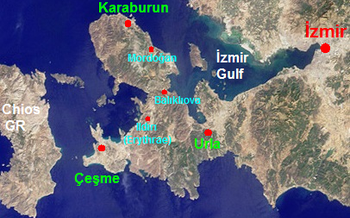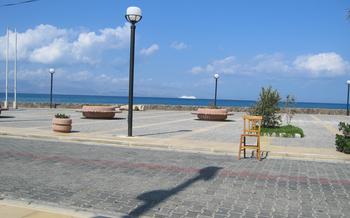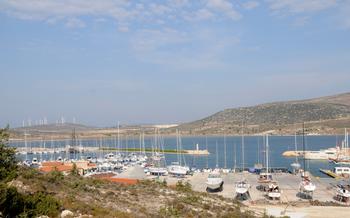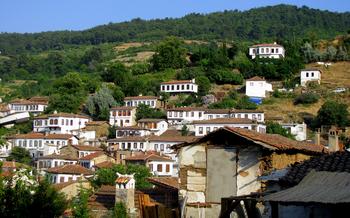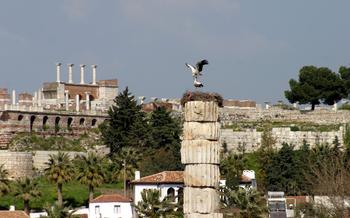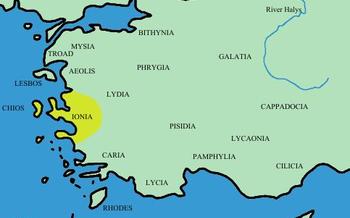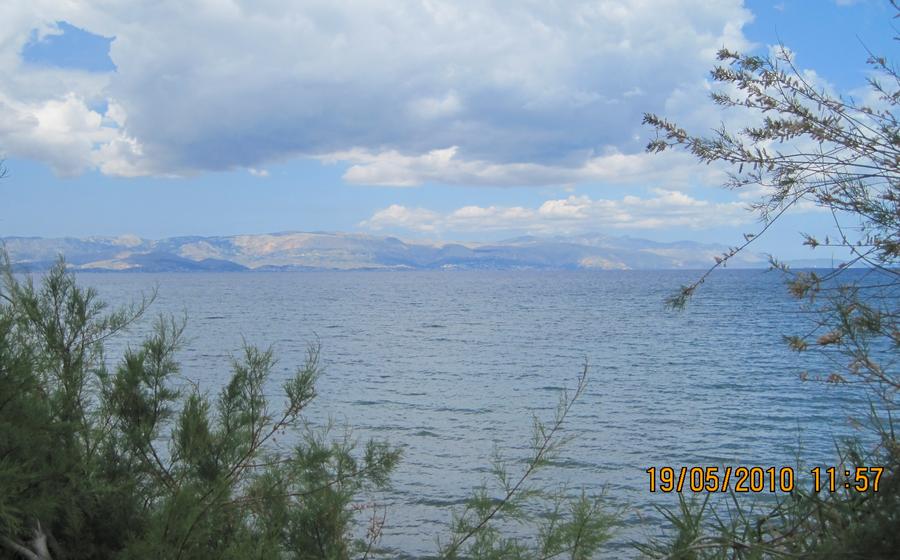
Alaçatı Windmills
- Alaçatı Windmills: Symbol of Çeşme
- The History of Alaçatı Windmills
- The Architecture of Alaçatı Windmills
- The Location of Alaçatı Windmills
- The Importance of Alaçatı Windmills to the Local Community
- How to Get to Alaçatı Windmills
- What to See and Do at Alaçatı Windmills
- The Best Time to Visit Alaçatı Windmills
- Tips for Visiting Alaçatı Windmills
- The History of Alaçatı
- The Culture of Alaçatı
- The Food of Alaçatı
- The Shopping in Alaçatı
- The Nightlife in Alaçatı
- Insider Tip: Discover the Secret Charm of Alaçatı Windmills
Alaçatı Windmills: Symbol of Çeşme
The Alaçatı Windmills are an iconic symbol of Çeşme, a coastal town in western Turkey. These picturesque windmills have a rich history and cultural significance, dating back to the 19th century. Their unique design, architectural features, and stunning location make them a must-visit attraction for tourists and locals alike.
The windmills were built in the 1850s by Greek immigrants who settled in Alaçatı. Initially, there were over 20 windmills in the area, but only seven remain today. These windmills were used to grind wheat and other grains, providing a vital source of flour for the local community. The windmills operated on the power of the Meltemi wind, a strong and consistent wind that blows from the Aegean Sea.
The Alaçatı Windmills are a remarkable example of engineering and architectural ingenuity. Their cylindrical stone towers, topped with conical wooden roofs, are a testament to the skill and craftsmanship of the builders. The windmills are made of locally sourced materials, such as stone and wood, which blend harmoniously with the surrounding landscape.
The windmills are located on a hilltop overlooking the town of Alaçatı and the Aegean Sea. This strategic location allowed them to harness the strong winds and provided a panoramic view of the surrounding area. The windmills are surrounded by olive groves and vineyards, adding to the charm and beauty of the landscape.
The History of Alaçatı Windmills
The Alaçatı Windmills, iconic symbols of Çeşme, have a rich and fascinating history dating back to the 17th century. These windmills were initially constructed to harness the power of the strong Meltemi wind that blows across the Aegean coastline. Their primary purpose was to grind wheat into flour, providing a vital source of food for the local community.
The windmills played a crucial role in the local economy, supporting a thriving agricultural sector. Farmers relied on the windmills to process their wheat into flour, which was then used to make bread, pasta, and other staples. The mills also contributed to the production of olive oil, another important commodity in the region.
During the 19th century, the Alaçatı Windmills reached their peak of operation. The town became a major center for flour production, with over two dozen windmills in operation. However, with the advent of modern technology and the introduction of electricity, the use of windmills gradually declined.
By the mid-20th century, most of the windmills had fallen into disuse and were abandoned. However, in recent years, there has been a renewed interest in preserving and restoring these historic structures. Several windmills have been carefully restored and converted into museums, shops, and cafés, allowing visitors to experience their unique charm and learn about their historical significance.
The Architecture of Alaçatı Windmills
The Alaçatı Windmills stand out for their unique architectural design, a testament to the ingenuity and craftsmanship of their builders. Constructed using local stone and wood, these windmills showcase a harmonious blend of traditional techniques and functional efficiency.
The windmills' cylindrical stone towers, typically ranging from 10 to 15 meters in height, provide a solid foundation and stability against strong winds. The use of stone, sourced from nearby quarries, ensures durability and longevity, enabling the windmills to withstand the elements for centuries.
The windmills' wooden components, including the sails, gears, and mechanisms, demonstrate the intricate craftsmanship and engineering skills of the local artisans. The windmills' sails, made from sturdy canvas or cotton, are carefully designed to capture the power of the wind and convert it into rotational energy.
The interior of the windmills reveals a complex system of gears and mechanisms that transmit power from the sails to the millstones, used to grind wheat or other grains. These mechanisms, crafted from wood and metal, showcase the builders' expertise in mechanical engineering and their ability to harness natural forces for practical purposes.
The Alaçatı Windmills exemplify a fusion of traditional construction methods and functional design, creating structures that are both visually striking and highly efficient. Their architectural legacy continues to inspire and captivate visitors, serving as a testament to the ingenuity and resourcefulness of the local community.
The Location of Alaçatı Windmills
The Alaçatı Windmills enjoy a strategic location that played a crucial role in their function and significance to the local community. Situated on the westernmost tip of the Çeşme Peninsula, the windmills are exposed to the Meltemi wind, a strong, steady wind that blows from the Aegean Sea. This constant wind provided the necessary energy to power the mills and grind wheat into flour.
The windmills are perched on a gentle slope, providing a panoramic view of the surrounding landscape. From the top of the windmills, visitors can take in the breathtaking views of the Aegean Sea, the Greek island of Chios, and the nearby villages of Alaçatı and Ilica. The panoramic vistas from the windmills are a major draw for tourists and photographers alike.
The surrounding villages of Alaçatı and Ilica are closely connected to the windmills. Alaçatı, a charming town with whitewashed houses and cobblestone streets, is a popular tourist destination known for its windsurfing and kitesurfing. Ilica, a smaller village located to the south of Alaçatı, is famous for its thermal springs and mud baths. Both towns have played a significant role in the preservation and promotion of the Alaçatı Windmills.
The Importance of Alaçatı Windmills to the Local Community
The Alaçatı Windmills hold immense significance to the local community in several ways. Firstly, they play a crucial role in the local economy. The windmills have been instrumental in promoting tourism in the region, attracting visitors from around the world who come to admire their beauty and learn about their history. This influx of tourism has created numerous job opportunities for locals, particularly in the hospitality and service sectors.
Secondly, the windmills have significant touristic value. They are a unique and iconic landmark that draws tourists to the area. Their picturesque appearance and historical charm make them a popular destination for photography, sightseeing, and cultural exploration. The windmills have become a symbol of Çeşme and are often featured in promotional material for the region.
Thirdly, the windmills play a crucial role in cultural preservation. They are a tangible link to the region's past and serve as a reminder of its rich cultural heritage. The windmills represent the ingenuity and craftsmanship of the local people and are a source of pride for the community. Preserving and maintaining these windmills ensures that future generations can appreciate and learn from this important part of their history.
Finally, the windmills have left a lasting legacy in the local community. They have shaped the identity of the region and continue to be a source of inspiration and pride for the local people. The windmills are a symbol of resilience, perseverance, and the enduring spirit of the community. They stand as a testament to the ingenuity and resourcefulness of the local people and their ability to adapt to changing circumstances.
How to Get to Alaçatı Windmills
Reaching the Alaçatı Windmills is a breeze, with various transportation options available. If you're driving from nearby cities like İzmir, simply follow the scenic roads towards Çeşme and Alaçatı. The windmills are conveniently located just a short drive from the town center, and you can easily spot them from afar, standing tall and majestic against the backdrop of the azure sky.
For those relying on public transportation, there are regular buses that depart from major cities and towns in the region, making a stop in Alaçatı. Once in town, you can either walk or take a short taxi ride to the windmills.
Guided tours are another excellent option, especially if you want to delve deeper into the history and significance of these iconic landmarks. These tours typically include transportation, a knowledgeable guide, and often a visit to other nearby attractions, making it a hassle-free and enriching experience.
To make the most of your visit, plan your trip during the shoulder seasons (spring or fall) when the weather is pleasant, and the crowds are smaller. The summer months can be scorching, and the influx of tourists can make it challenging to fully appreciate the tranquility and beauty of the windmills.
What to See and Do at Alaçatı Windmills
Discovering the Alaçatı Windmills:
Prepare to be captivated as you step into the realm of the Alaçatı Windmills, where history and nature converge to create a truly unique experience. Take your time to explore these architectural marvels, admiring their intricate designs and the resilience they have shown over centuries. As you wander through the site, imagine the industrious past that unfolded here, when the windmills played a pivotal role in the local economy.
Reaching the Summit for Panoramic Views:
Embark on a journey to the heights of the windmills, climbing the stone steps that lead to the top. Feel the thrill of reaching the summit and be rewarded with breathtaking panoramic vistas. Let your gaze sweep across the picturesque landscape, taking in the vast expanse of the Aegean Sea, the lush green hills, and the vibrant town of Alaçatı nestled below. Capture the essence of this moment with your camera, preserving the beauty of the scene for years to come.
Capturing the Essence of the Windmills:
As you explore the Alaçatı Windmills, don't forget to bring your camera. The windmills, with their distinctive silhouettes against the backdrop of the Aegean Sea, offer countless photo opportunities. Capture the essence of these iconic structures from various angles, experimenting with different perspectives and compositions. Let your creativity shine as you create a collection of images that will serve as cherished memories of your visit.
Exploring the Alaçatı Bazaar:
After immersing yourself in the history and beauty of the Alaçatı Windmills, take a short stroll to the nearby Alaçatı Bazaar. This vibrant marketplace is a treasure trove of local crafts, souvenirs, and culinary delights. Browse the colorful stalls, where you can find handmade jewelry, traditional textiles, and unique ceramics. Treat your taste buds to local specialties such as gözleme (savory pancakes) and keşkek (wheat and meat dish). The Alaçatı Bazaar is a perfect place to soak up the authentic atmosphere of this charming town.
The Best Time to Visit Alaçatı Windmills
Choosing the right time to visit the Alaçatı Windmills can greatly enhance your experience. While the windmills are accessible year-round, certain factors should be considered to ensure optimal conditions.
Spring (April-May) offers pleasant weather with fewer crowds, making it ideal for a peaceful visit. Temperatures range from mild to warm, allowing for comfortable exploration.
Summer (June-August) brings hot and sunny days, perfect for basking in the Mediterranean sun and enjoying the stunning views from the windmills. However, the peak tourist season can result in larger crowds.
Autumn (September-October) provides a delightful blend of warm days and cool evenings, making it an excellent time to visit. The crowds have subsided, offering a more relaxed atmosphere.
Winter (November-March) presents a different charm, with occasional rain and cooler temperatures. While the windmills remain open, the weather may not be suitable for extensive outdoor activities.
Regarding the time of day, mornings and late afternoons offer the most favorable conditions. The soft, golden light during these hours creates a picturesque ambiance for photography and sightseeing.
The Alaçatı Windmills also host special events and festivals throughout the year. These events offer unique opportunities to experience the windmills in a vibrant and festive atmosphere.
To avoid crowds and enjoy a more tranquil visit, consider visiting during the shoulder seasons (April-May and September-October). These periods offer a delightful balance of pleasant weather and fewer tourists.
Tips for Visiting Alaçatı Windmills
Visiting the Alaçatı Windmills requires some preparation and consideration for a comfortable and enjoyable experience.
-
Comfortable footwear: Opt for sturdy and comfortable shoes suitable for walking and climbing uneven surfaces, as the terrain around the windmills can be rocky and uneven.
-
Camera essentials: Bring a camera or smartphone to capture the stunning scenery and the iconic windmills. Ensure the battery is charged and consider bringing extra storage or memory cards to avoid missing any photo opportunities.
-
Wind preparedness: Be prepared for strong winds, especially during the windy season. Consider bringing a scarf or light jacket to keep warm and protect your hair and eyes from the wind.
-
Hydration is key: Stay hydrated, particularly during hot weather. Bring a reusable water bottle and refill it regularly to avoid dehydration, especially when climbing the windmills.
The History of Alaçatı
Alaçatı, a charming town on the Çeşme Peninsula, boasts a rich and diverse history dating back to ancient times. Founded by Ionian Greeks in the 11th century BC, it was initially known as "Agrilia" and served as a significant port city. Throughout the centuries, Alaçatı fell under the rule of various civilizations, including the Romans, Byzantines, Seljuks, and Ottomans, each leaving their unique mark on the town's cultural tapestry.
In the 19th century, Alaçatı experienced a period of prosperity as a center for viticulture and olive cultivation. Greek Orthodox and Turkish Muslim communities lived together harmoniously, contributing to the town's vibrant cultural and economic life. However, during the tumultuous years of the Greek-Turkish population exchange in 1923, the town's Greek population was forced to leave, leaving behind a legacy of abandoned stone houses and churches.
Alaçatı's fortunes changed dramatically in the late 20th century when it was rediscovered by Turkish tourists and investors. The town's unique architectural heritage, stunning natural beauty, and relaxed atmosphere made it a popular destination for holidaymakers seeking a tranquil escape from the hustle and bustle of city life. Today, Alaçatı has transformed into a thriving tourist hub, while still retaining its authentic charm and historical allure.
The Culture of Alaçatı
Alaçatı is a town with a rich and varied culture, shaped by its unique history and the convergence of different cultural influences. The town's customs and traditions are a blend of Turkish, Greek, and Aegean elements, creating a vibrant and distinctive cultural tapestry.
One of the most significant cultural events in Alaçatı is the annual olive harvest. Olives are a vital part of Alaçatı's agricultural heritage, and the harvest is a time of great celebration and community spirit. The town's many olive groves are alive with activity as families and friends gather to pick the ripe olives. The harvested olives are then pressed into olive oil, which is used in many local dishes and culinary specialties.
Alaçatı is also renowned for its vibrant arts and crafts scene. The town is home to many talented artists and artisans who create unique and beautiful works of art. Visitors can explore the town's many galleries and workshops to admire the local craftsmanship and purchase one-of-a-kind souvenirs.
The Greek heritage of Alaçatı is still evident in many aspects of the town's culture. The town's architecture, cuisine, and customs all bear the influence of its Greek past. Alaçatı is home to several historic Greek Orthodox churches, which are a testament to the town's diverse cultural heritage.
The culture of Alaçatı is warm and welcoming, reflecting the friendly and hospitable nature of the local people. Visitors to Alaçatı can immerse themselves in the town's rich cultural heritage by participating in local festivals and events, sampling the delicious cuisine, and exploring the town's many cultural attractions.
The Food of Alaçatı
Alaçatı is a culinary paradise, renowned for its fresh, local ingredients and delicious dishes. The town's cuisine is heavily influenced by its proximity to the Aegean Sea, with seafood playing a starring role in many of its most famous dishes. Visitors to Alaçatı can indulge in a variety of seafood delicacies, including grilled octopus, stuffed mussels, and fried calamari.
One of Alaçatı's signature dishes is "Alaçatı böreği," a flaky pastry filled with a mixture of cheese, herbs, and vegetables. This savory treat is a must-try for any visitor to the town. Another local specialty is "gözleme," a thin, flatbread filled with various ingredients, such as cheese, spinach, or minced meat. Gözleme is a popular street food in Alaçatı and can be found at many of the town's restaurants and cafés.
Alaçatı is also known for its olive oil, which is produced from the olives grown in the surrounding countryside. The town's olive oil is of exceptional quality and is used in many of the local dishes. Visitors can sample the local olive oil at one of the town's many olive oil tasting shops.
No visit to Alaçatı is complete without trying the town's famous desserts. One of the most popular desserts is "künefe," a sweet pastry filled with cheese and topped with shredded filo dough and syrup. Another local favorite is "dondurma," a Turkish ice cream that is made with goat's milk and mastic gum. Dondurma is often served with a variety of toppings, such as nuts, fruit, or chocolate sauce.
With its abundance of fresh seafood, delicious pastries, and mouthwatering desserts, Alaçatı is a food lover's paradise. Visitors to the town can indulge in a culinary adventure that will leave them wanting more.
The Shopping in Alaçatı
Alaçatı is a shopper's paradise, with a wide variety of shops and boutiques to choose from. Whether you're looking for souvenirs, clothing, or home goods, you're sure to find something to your liking in Alaçatı.
The town is home to many unique shops and boutiques that sell everything from handmade jewelry and pottery to designer clothing and home décor. You can also find a variety of souvenirs, such as postcards, magnets, and t-shirts.
If you're looking for a bargain, be sure to check out the town's many markets. The Alaçatı Bazaar is a particularly good place to find deals on everything from clothes and accessories to souvenirs and home goods.
Here are some tips for shopping in Alaçatı:
- Be sure to bargain with the vendors. This is expected in Turkey, and you can often get a good deal if you're willing to haggle.
- Be sure to bring cash. Many of the shops and markets in Alaçatı do not accept credit cards.
- Be prepared to do a lot of walking. Alaçatı is a very walkable town, and you'll likely do a lot of walking if you want to explore all of the shops.
- Be sure to bring a bag to carry your purchases. You'll likely end up buying a lot of stuff in Alaçatı, so be sure to bring a bag to carry it all in.
The Nightlife in Alaçatı
Alaçatı's nightlife scene is vibrant and bustling, with a wide range of bars, clubs, and live music venues to choose from. Whether you're looking to dance the night away or simply relax with a drink in hand, you're sure to find something to your liking in this lively town.
Some of the most popular bars in Alaçatı include the Alaçatı Meyhanesi, which offers a traditional Turkish tavern experience, and the Limon Bar, which is known for its cocktails and live music. If you're looking for a more upbeat atmosphere, head to one of the town's many nightclubs, such as the Club Alaçatı or the Soho Club.
For a truly unique experience, be sure to check out one of Alaçatı's many live music venues. These venues host a variety of acts, from traditional Turkish musicians to international DJs. Some of the most popular live music venues in Alaçatı include the Babylon Alaçatı and the Jazz Bar Alaçatı.
No matter what your taste in nightlife, you're sure to find something to your liking in Alaçatı. So come on out and experience the vibrant nightlife scene of this charming Turkish town!
Insider Tip: Discover the Secret Charm of Alaçatı Windmills
Unveiling the hidden gem of Alaçatı Windmills lies in venturing beyond the main tourist routes. As you stroll through the charming cobblestone streets, let your curiosity guide you towards a secluded corner where a lesser-known windmill stands proudly. This hidden gem offers a serene retreat, inviting you to immerse yourself in the tranquility of the surroundings. Take a moment to sit by its base, feel the gentle breeze caress your skin, and let the rhythmic sound of the turning blades transport you to a simpler time. As the sun begins to set, the windmill's silhouette casts a majestic shadow across the landscape, creating a magical ambiance that will leave you spellbound.
